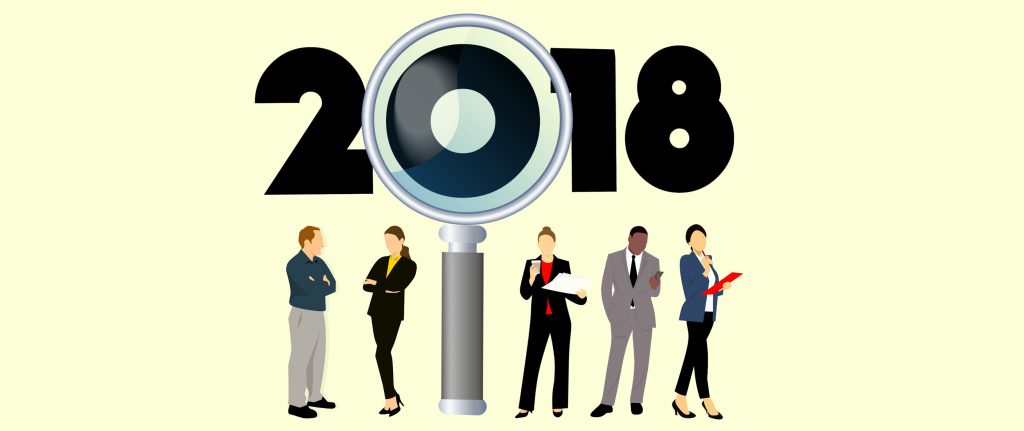 2018 is here and this is the year you want to find that next best job. Are you ready? We have prepared this list to make sure that you have all your job search tools ready to get you to that next job in the shortest possible time. We’ve also linked to our best blog posts for more detail:
2018 is here and this is the year you want to find that next best job. Are you ready? We have prepared this list to make sure that you have all your job search tools ready to get you to that next job in the shortest possible time. We’ve also linked to our best blog posts for more detail:
How to successfully overcome job search mistakes
A while ago, a client of mine called me regarding a job she had just applied for; it was perfect! The job title was exactly what she wanted and the company was located right near her home. Unfortunately, maybe because she was so excited, or maybe because she was applying in a rush, she made mistakes in her application — the kind of mistakes described by some online job search advice blogs as deadly sins. She had sent it before spell-checking it, which left two typos in her cover letter. She called me nearly in tears the next morning – what should she do?
If you Google “job search mistakes”, you will find a long list of articles and blog posts that use words such as avoidable, costly and even deadly or, more dramatically, killer to describe the impact of even the smallest of mistakes. While it is true that making a mistake is something to be avoided as much as possible, there are some things that can be done, some of which might make a very big difference — even to the point of impressing a potential employer enough to reconsider your application.
Job search mistakes can happen at every level of job search including during networking, resume writing, and interviewing; many of these errors can be avoided with some knowledge and careful planning (found in many of these excellent blogs.) Interestingly, as my client pointed out, almost no attention is paid online to helping job searchers recover from these mistakes. This left her feeling that once she made a mistake, the impact was so dire that she might as well just give up.
In this economy, where many talented job searchers compete for only a few jobs, you might think that it is easy for an employer to eliminate a candidate based on small, preventable mistakes. Yet many employers claim that they struggle to find qualified candidates. Perhaps that is the reason that they might be open to reconsidering an otherwise strong candidate before rejecting them for making a small mistake. However, this can only happen if the candidate deals with the mistake quickly and properly.
Pearl Buck, winner of the 1938 Nobel Prize in Literature suggested that:
“Every great mistake has a halfway moment, a split second when it can be recalled and perhaps remedied”
This principle (which is a pretty useful life lesson) can be easily applied to a job search; many mistakes can be corrected through direct action, which might include a quick (and brief) apology, taking responsibility and correcting the error.
After discussing her options, my client decided to reapply to the job. She corrected the errors in the cover letter, updated the date on it, and re-sent it to the employer with the following note in the email:
Dear Ms X,
I am hereby re-submitting my application for the xxxx position, after having already submitted an application for this position yesterday. This morning, after reviewing my application, I regretfully noticed two errors in my cover letter. While inexcusable (and not something that happens often, my references would assure you), I am reapplying with a corrected document in hopes that you may still consider me for this position, for which I believe, I am highly suited.
While I do hope you will reconsider me for this position, I will understand if you chose to consider another applicant.
I look forward to the opportunity to prove my worth to you in an interview.
Sincerely
XXX XXXXXX
The employer response was remarkable: not only did she invite my client for an interview, but she remarked that she was so impressed by my client’s ability to responsibly address a mistake, that she prioritized her application above the others.
The principles of such an artful and effective apology are neatly outlined in this excellent article, where the author quotes an employer who says that “The secret to my success as a leader in my business has been my ability to offer well-timed and heartfelt apologies after mucking things up.”
Here is what he recommends, as tips for “Constructing an Appropriate, Effective Apology”:
A well-constructed apology is:
1. Timely – As close to the transgression as possible.
2. Specific – By describing what you did wrong and why it was wrong, you are showing your command of yourself and your awareness of the impact you have on people and on the workplace.
3. Behavioural – Try: Here’s what I intended and why…here’s what I did…and I understand that my approach failed to communicate what I intended.
4. Genuine – Say what you mean and mean what you say.
5. Brief – No one wants you to draw it out. Don’t make excuses for your behaviour and don’t try and describe the twenty things that happened that day that added up to your bad moment.
Such an apology is bound to impress the potential employer and convey your ability to be a responsible employee who might add value to the position.
Bottom line: As John Powell stated:
The only real mistake is the one from which we learn nothing.
If you catch yourself in a small error, set out to quickly, briefly and simply resolve it. You have nothing to lose and everything to gain. You may even make an even better impression than you intended.
What are employers’ attitudes toward tattoos and piercings?
 In 2011, an Ipsos Reid poll conducted for Global Television, found that over 20% of Canadians have at least one tattoo on their body. And more recent evidence has shown that this number is increasing as more young people are choosing to get inked. Body piercings also seem more prevalent these days. Despite the rise in popularity, should job seekers still worry about negative attitudes toward tattoos from employers?
In 2011, an Ipsos Reid poll conducted for Global Television, found that over 20% of Canadians have at least one tattoo on their body. And more recent evidence has shown that this number is increasing as more young people are choosing to get inked. Body piercings also seem more prevalent these days. Despite the rise in popularity, should job seekers still worry about negative attitudes toward tattoos from employers?
Just like many other job search concerns, there is no single answer. Employers’ expectations about tattoos and piercings are as varied as they are; it depends on the type of company, its employees, and the nature of the specific job the candidate is applying for.
A recent Salary.com survey assessed peoples’ perceptions of the impact of tattoos and piercings on employment. It revealed that the vast majority (76 percent) felt that tattoos and piercings hurt applicants’ chances of being hired, with many (39 percent) believing that employees with tattoos and piercings reflect badly on their employers. Many (42 percent) also believed that visible tattoos are not appropriate at work. Despite the high numbers of people with negative attitudes, there still is a large proportion (60 percent or so) of people who are open to to the possibility of tattoos not necessarily being inappropriate or reflecting negatively on employers.
As with everything, there is no hard and fast rule about employers’ preferences, except to consider that employers like to hire candidates that seem like a ‘good fit’ with the company and its customers. For example, it’s a safe assumption that the more corporate the employer, the more likely tattoos and piercings will be frowned upon. It is also likely that older employers are more likely to hold old fashioned judgments about them. Conservative industries such as banking and law might be more critical of candidates with visible tattoos or piercings, whereas more creative or alternative sectors might be more open. It also may depend on whether the job to which you are applying involves facing customers, and who those customers may be – if the customers you might be serving are more likely to have tattoos, then perhaps the company would not mind if you have visible tattoos, as well.
So, what is the best advice for job seekers about tattoos?
Think carefully about who you are expecting to be interviewed by and what their attitudes might be. If possible, check out the workplace before going for the interview and assess what the staff, and customers, look like. If you are unsure, it may be a safer bet to cover up visible tattoos or piercings for the interview until you know more; you don’t want your appearance to be a distraction from the real assets you bring to the interview and the job.
Identify the key person in a company to help you get hired
When I ask my clients who they would like to connect with to help them get a job in their target companies, the standard answer is almost always “Human Resources.” Job seekers tend to believe that the Human Resources (HR) staff make the final hiring decisions or are, at least, in the best position to influence hiring final decisions. This results in cover letters often being addressed to HR staff and LinkedIn connection requests being sent to them.
HR managers receive a huge number of calls, emails and LinkedIn requests daily from people trying to get employment opportunities in their companies. Job seekers might be surprised to learn that it is exceedingly rare for HR staff to be able or willing to influence hiring decisions. In most medium to large-sized companies, the final decision regarding who to hire is not made by HR managers. Most decisions such as these are made by heads of departments or team leads.
What does this mean for the average job seeker? If you are going to address your cover letter to a particular person, you might want to figure out exactly who they are. If that isn’t possible, then use the title mentioned in the job posting. If that is not available, then address the letter to “the hiring manager.”
For networking purposes, the most useful contacts are not necessarily those who make the final hiring decision, because those people are often particularly cautious about not being seen as applying any personal influence on hiring choices. Of course, if you personally know a hiring person well, and you know that they know and respect your work, of course you should approach them. For the rest of us, if you do not know the hiring manager, you may have greater success if you are referred to that person by someone who does know them. Very often, that is the person who does the same kind of job for which you are applying, such as a potential team member. For example, if you are applying for a social worker position, you might have much greater success at getting referred to the hiring manager if you connect with other social workers on the team.
Use LinkedIn to seek out people in your field who do the work that you want to do in your target companies. Connect with them and join LinkedIn groups in which they participate. Initiate conversations with them online, or even better, arrange to meet with them in person for a short information interview. Make a point of connecting with as many potential team members as possible. These contacts are, by far, the most useful sources of employment opportunities.
A referral from a potential colleague can be a very effective way to influence a hiring decision. If you are able to establish strong ties to them, you will find that when job opportunities do finally come up in their companies, you will have the most influential people on your side. They might think of you when employment opportunities come up, and even be willing to reach out to the hiring manager on your behalf.
Ace the pre-interview telephone call
There comes a moment, after having written and submitted your resume to many jobs, when the phone finally rings. The caller informs you that they are calling to have “a quick conversation” regarding your application, and to determine whether you will be invited to an in-person interview.
Pre-interview telephone calls are becoming an increasingly popular way to help employers sort through the many qualified candidates that come their way. The problem is that call can come on your cell phone at any time and at any location, completely unexpectedly and out of context. At that stressful moment, when you know that your reply could be the deal breaker, you want to be able to answer the employer’s questions in the best way possible, and not sound as if you were caught off-guard, or are unfocused and unprepared.
To prepare for the pre-interview call, consider the following:
Who is the caller and what do they want?
Listen out carefully to who the caller is – their name and title. Note it. The caller might be the Administrative Assistant to the employer, who’s been given a short list of quick questions to ask, but they also might be the Hiring Manager who will be in the position to make the final decision about who is hired. Another possibility is that it’s a Recruiter preselecting candidates for the employer, and who might be in a position to consider you for other positions, if this one doesn’t work out.
Don’t underestimate any of these people – all three are important, including the Administrative Assistant who might be asked for their opinion about how well you handled yourself on the phone. Frontline administrative staff might be able to offer you extra information or tips, if they like you, or remember who you are when you call to follow up. They can be the gateway to the Hiring Manager.
Keep in mind that the caller might not necessarily have a lot of time, so take your cue from them in regards to how much can be said at that moment. On the other hand, they might want to use this time for a more indepth interview, and might not be in a hurry. Listen carefully to how they speak, and ask how much time you have to answer a question (or how much detail they would like), if you are not sure.
How to prepare?
While you cannot be perfectly prepared, it would be best if you have a list of the jobs you have applied to, so that you can identify the employer when they call. However, that is not always possible – there’s always the possibility of hearing from employers who you do not recognize, if you are using LinkedIn properly — you might get a call from a recruiter who was simply impressed by your profile.
- Keep track of your job search. Have the details of when, where, and for what positions you have applied accessible, either electronically (online, even), or on a hard copy. Some job seekers keep a spreadsheet of the jobs they have applied to, and use it to track dates they receive replies, when they had an interview, etc. There are some useful online tips on how to do this, including apps and websites that can help.
- Have your resume easily accessible, both for you to review when they call, and to be able to email them if they request it (if you were found on LinkedIn, or via a referral). It may sound strange that I am telling you that you might want to review your own resume while talking on the phone, but sometimes it helps to have a reminder of your exact dates and job titles at that moment the phone rings unexpectedly.
- Be ready to talk about yourself. This is a skill that will be vital throughout your job search process – think through what you want to say when asked “tell me about yourself”: what does the employer need to know about you that can be said concisely and yet be interesting enough for them to be impressed? Write it out, and practice it until it comes naturally. You can use your Profile/Summary of Qualifications on your resume for inspiration, and make sure to address typical employer requirements. Be ready to detail and describe your skill levels, if asked — especially in regards to technical skills such as software or the languages you speak.
- Think through what you want to ask. Don’t ask too many questions; there usually isn’t a lot of time to talk about the job on the phone – save that for an in-person interview. But you do want to make sure that you get all the details you need for the interview if they invite you one.
- Have your calendar/day timer quickly accessible. One of the main reasons for the call, is to book an appointment. Be ready to do so immediately.
How to deal with the call?
The physical space in which you have the telephone conversation can impact an employer’s first impression of you. If necessary, politely ask the employer if they can wait a quick moment while you find a focused place to talk.
Find a quiet, undistracted place, and – only if possible – quickly retrieve your records (resume, calendar, job application records).
Some people report that it is better to talk standing up, if you can (people tend to be more focused when they’re standing or walking).
It is most preferable that you do whatever you can to take the call, but if it’s an impossible circumstance (you’re dealing with a screaming child, driving, or in with your doctor, for example), apologise and explain to the caller that they called at a difficult moment. Ask if you can call them back. Be very specific about when you will call (or when you are available for them to call you) and make sure to adhere to that time absolutely. Try to make that happen as soon as possible – preferably on the same day.
Finally
End the call by expressing your gratitude for the call and your enthusiasm about the position. Don’t gush – just be professional, yet eager. Ask for the necessary details – the name and contact details of the person you spoke to, as well as the interview specifics. If it turns out that you are not the right candidate for the interview (perhaps you don’t have the specific software skill needed), ask the employer/recruiter to keep you in mind for other possible positions that may arise.




